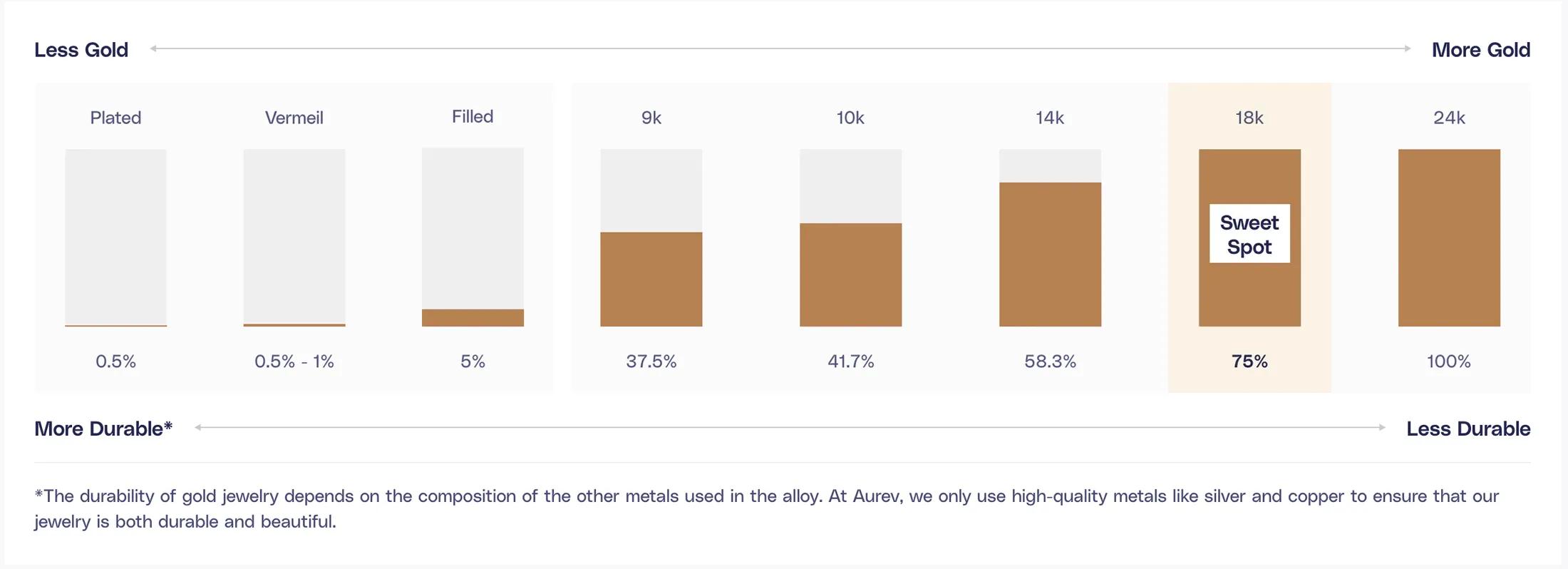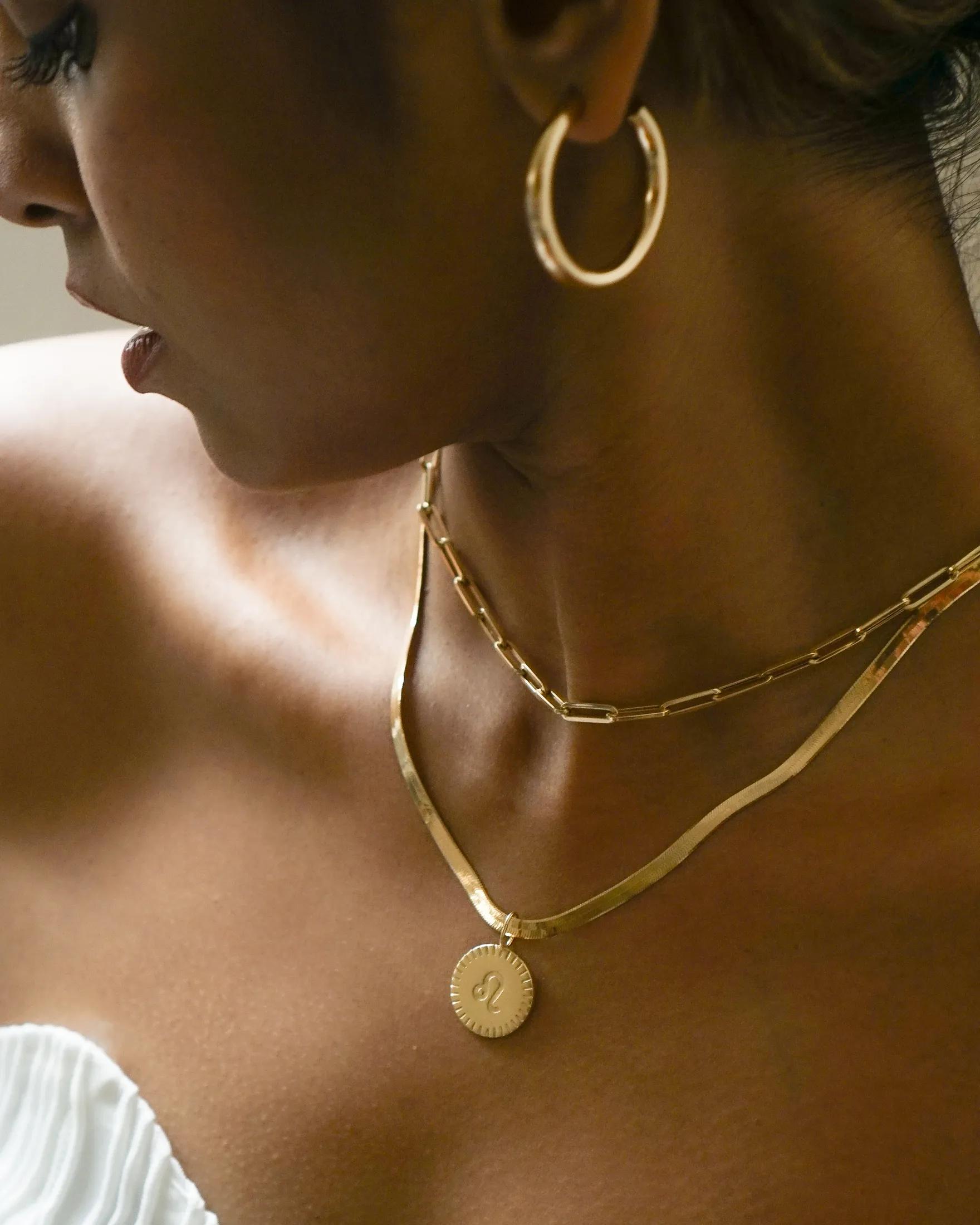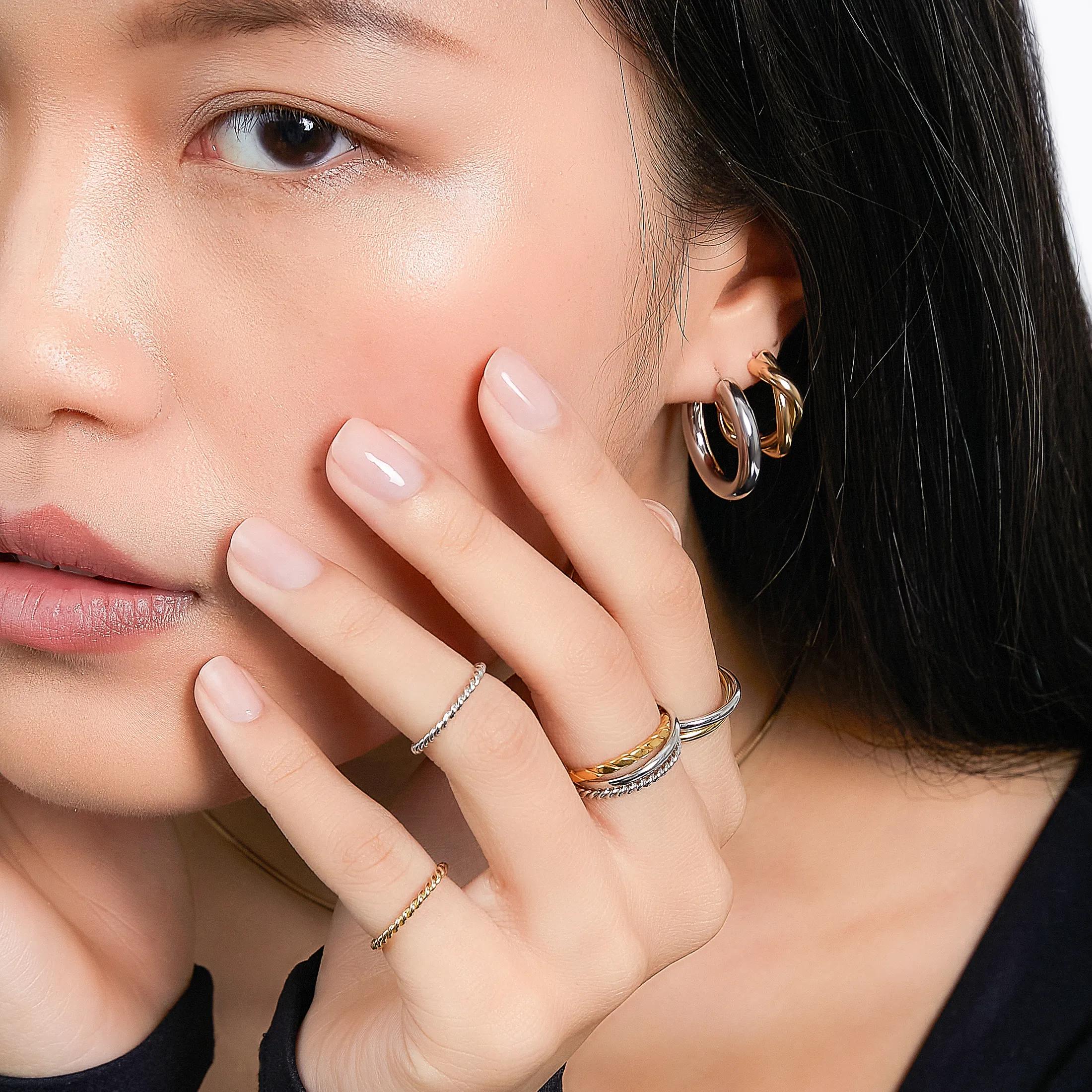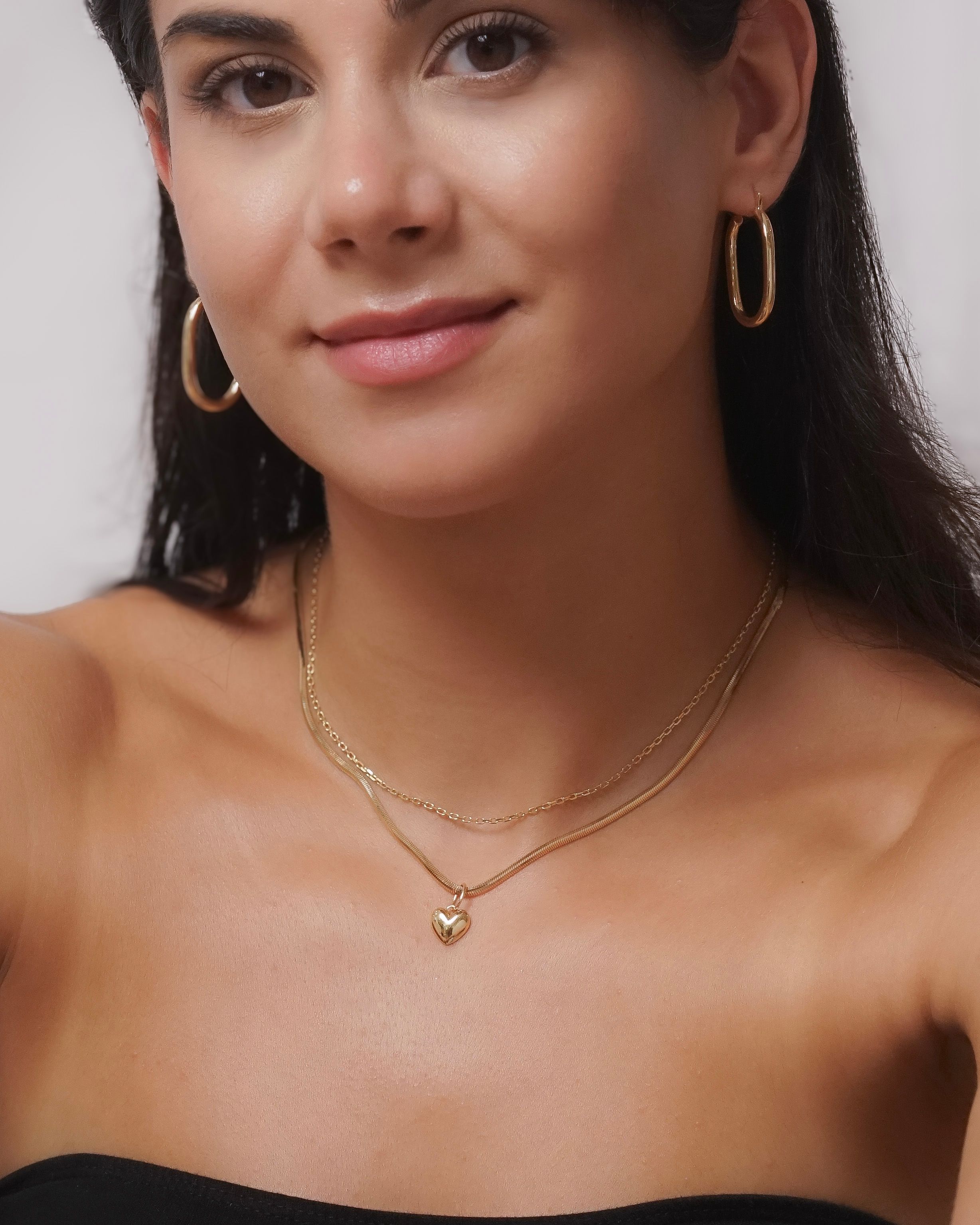AURÉV’s Essential Gold Purity and Color Guide
by Stephanie Kim ・ 01 Nov 2025 ・5 min read
Not all gold is created equal. Understanding the purity and color of gold is essential for making informed purchasing decisions. At AURÉV, we're dedicated to providing you with the knowledge you need to choose the perfect piece of gold jewelry. Let's delve into the intricacies of gold purity and color to help you find your ideal investment piece.
Understanding Gold Purity - What Does Karat Mean in gold?
In discussions about gold, the term "karat" often surfaces. Gold purity is measured in karats, denoted by the “K” symbol. Karat isn't just a unit; it's a language expressing the purity and composition of gold in your jewelry. In simple terms, karat measures the ratio of pure gold to alloy metals on a scale from 1 to 24. The higher the karat, the greater the proportion of pure gold.
What is 24k gold?
24k, or 24 karat gold, symbolizes the pinnacle of purity, with each of its 24 parts being pure gold, surpassing 99.5% purity, emanating a distinct bright yellow hue. This unmatched purity, however, comes with trade-offs as pure gold is extremely malleable, making it unsuitable for jewelry. Despite its softness due to the absence of alloy metals, 24k gold holds a higher price tag and finds prevalence in coins and bars.
What is 18k gold?
18k gold, or 18 karat gold, strikes a harmonious balance with 75% pure gold and 25% alloy metals. This meticulous blend creates a lustrous, vibrant gold hue, marrying purity with enhanced durability. Recognized for its versatility, 18k gold stands as a preferred choice for various jewelry styles. At AURÉV, our commitment extends to ensuring 18k gold is free from nickel and brass, enhancing both its hypoallergenic properties and overall quality.
What is 14k gold?
14k gold, or 14 karat gold, embodies resilience with its composition of 58.3% pure gold and 41.7% alloy metals, resulting in a subtly paler gold tone due to the higher percentage of alloy metals. Recognized for its affordability and durability, it's a practical choice. However, it may cause skin issues for those allergic to copper, zinc, silver, nickel, or iron, and it's less recyclable compared to higher karat gold options.
What is 10k gold?
In contrast to its counterparts, 10k gold features a composition of 41.7% pure gold and 58.3% alloy metals, resulting in a paler tone. Renowned for its practicality and affordability, it embodies classic gold appeal without the higher price tag. However Similar to 14k gold, individuals sensitive to certain alloys may experience skin irritation with 10k gold. Additionally, its recycling poses additional challenges compared to higher karat gold options.

Choosing the Perfect Gold Purity for Your Jewelry
Choosing the right karat for your jewelry depends on various factors, including your color preference, budget, and the level of durability you desire.
Gold Purity and Sustainability:
Lower karat gold, such as 14k or 10k gold, is generally considered less sustainable compared to higher karat gold alloys like 18k or 24k for several reasons:
Look for reputable jewelers who use high-quality materials and ethical practices in their manufacturing process. Choose jewelry that is well-crafted and backed by warranties or certifications for peace of mind.
Consider your personal color, budget preferences, and the intended use of the jewelry when making your decision. If in doubt, read our guide on verifying gold purity to ensure confidence in your jewelry selection.
At AURÉV, we exclusively use 18k solid gold in all our jewelry pieces due to its exceptional durability, purity, and timeless quality. Opting for 18k gold guarantees that our pieces are not merely embellishments but investments that endure gracefully over time. Moreover, 18k gold's recyclability aligns with our commitment to sustainability practices
Shop Gold


